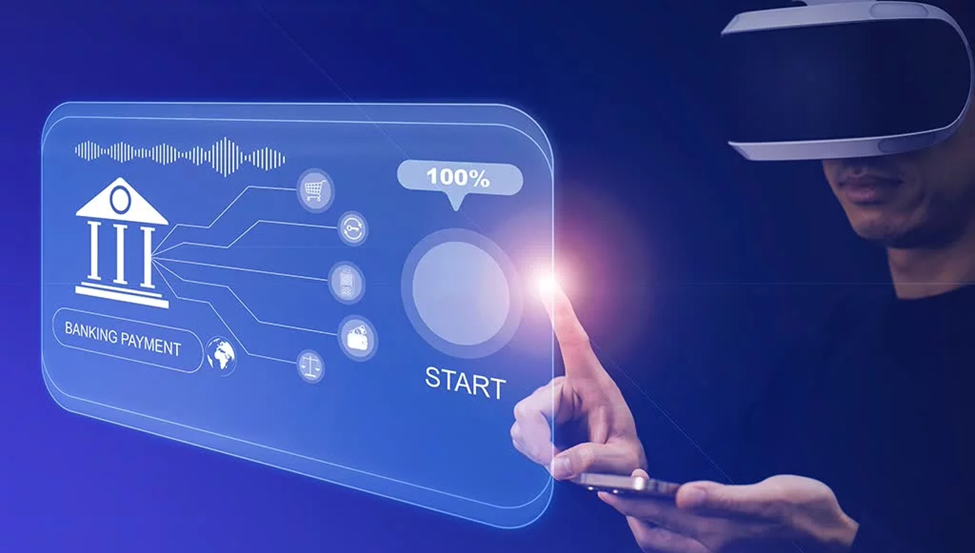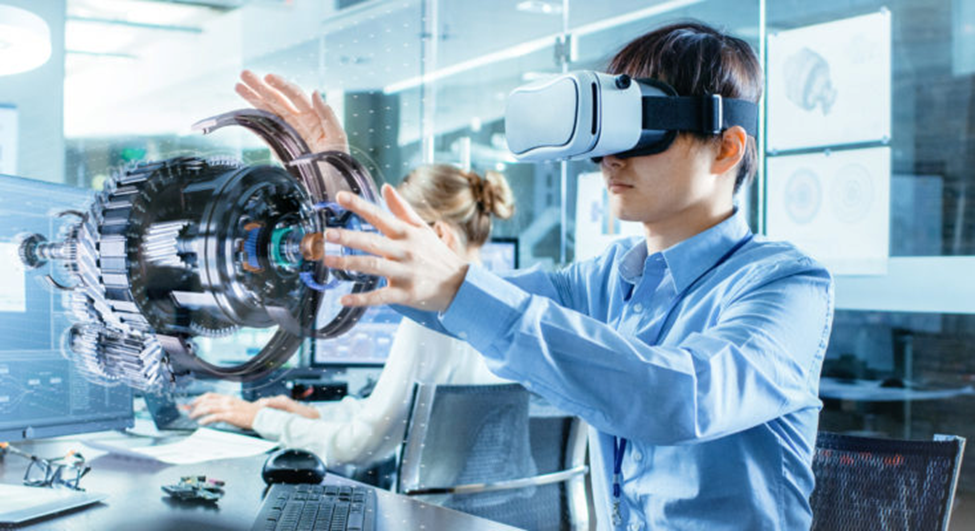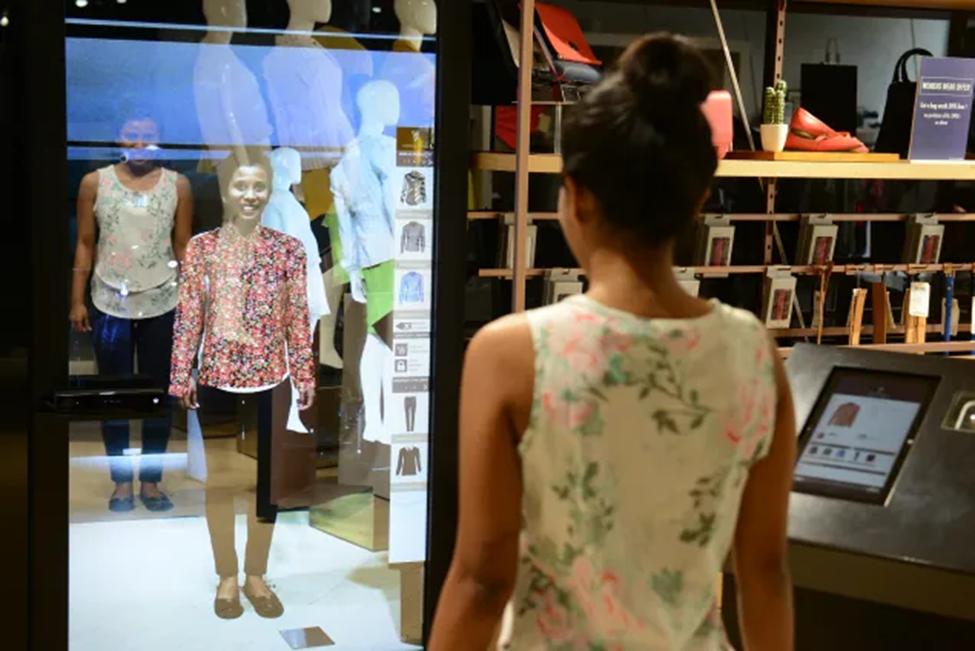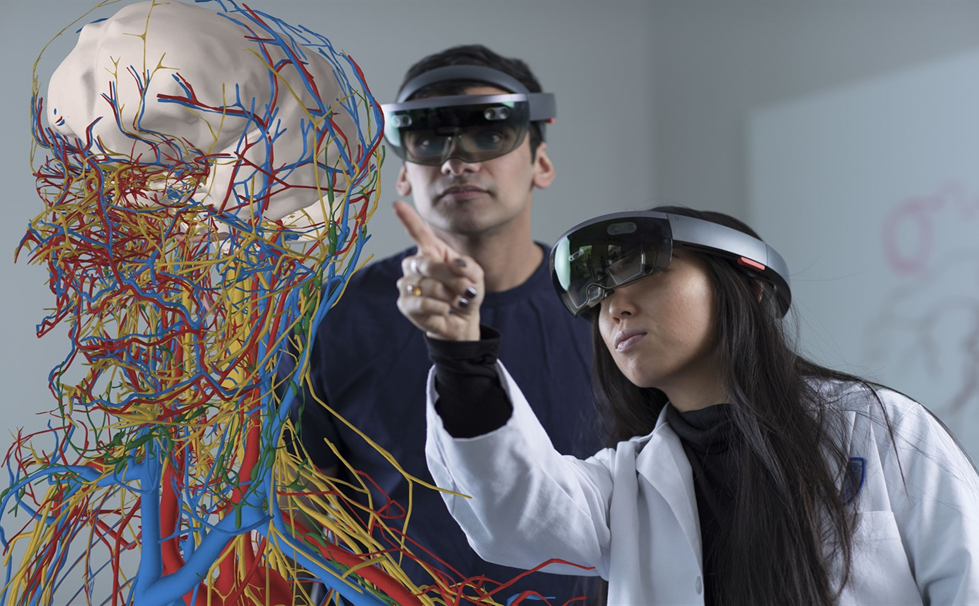VR Services
VR FOR BANKING
Immersive Banking Experiences: Develop VR applications that offer customers immersive experiences, such as virtual tours of bank branches or simulated interactions with financial advisors.
Training and Employee Development: Create VR simulations for training bank employees, allowing them to practice scenarios like customer interactions, security protocols, or handling complex transactions in a simulated environment.
Financial Education and Planning: Design VR modules to educate customers about financial planning, investment strategies, or retirement planning in an engaging and interactive manner.
Virtual Meetings and Consultations: Enable VR-powered virtual meetings between clients and advisors, providing a more immersive and personalized consultation experience regardless of geographical location.
Data Visualization and Analytics: Utilize VR to visualize complex financial data and analytics, allowing bankers to explore data in three-dimensional spaces for better insights and decision-making.
Branch Design and Prototyping: Use VR to prototype and visualize branch designs, allowing stakeholders to explore and refine branch layouts before physical construction.
Risk Assessment and Compliance Training: Develop VR simulations for risk assessment scenarios or compliance training, helping employees understand and navigate complex regulatory frameworks.
Remote Work and Collaboration: Facilitate VR-based collaborative environments for remote teams, enhancing communication and collaboration among dispersed banking professionals.

VR FOR MANUFACTURING
Product Design and Prototyping: Develop VR simulations to aid in product design, allowing engineers and designers to visualize and interact with 3D models, facilitating faster prototyping and iterations.
Factory Layout and Optimization: Create VR models to design and optimize factory layouts, enabling stakeholders to visualize workflows, equipment placement, and logistics for efficient operations.
Training and Simulation: Develop VR training modules for machinery operation, safety protocols, and complex assembly procedures. VR simulations can provide hands-on training without the need for physical equipment.
Remote Assistance and Maintenance: Implement VR solutions for remote assistance, enabling experts to guide on-site technicians through maintenance or repair tasks using interactive VR interfaces.
Quality Control and Inspection: Use VR to simulate inspection scenarios, allowing inspectors to visualize and assess products or components in a virtual environment for quality control purposes.
Supply Chain Visualization: Develop VR tools to visualize and track supply chains, enabling manufacturers to monitor inventory, shipments, and logistics in a comprehensive 3D representation.
Collaborative Design and Prototyping: Enable collaborative VR environments where teams across locations can collaborate on designs, enhancing communication and accelerating the prototyping process.
Machine and Process Visualization: Utilize VR to visualize machinery operation and processes, allowing stakeholders to identify inefficiencies, potential bottlenecks, or areas for improvement.
Data Visualization and Analytics: Develop VR dashboards to present complex manufacturing data and analytics in an immersive format, aiding in data-driven decision-making.

VR FOR RETAILER
Virtual Shopping Experience: Develop VR applications that allow customers to virtually browse through the store’s inventory from anywhere, enabling immersive shopping experiences from the comfort of their homes.
Virtual Try-On and Fitting Rooms: Create VR tools that enable customers to virtually try on clothing, accessories, or makeup, providing a realistic experience and aiding in purchase decisions.
Store Design and Layout: Use VR to prototype and visualize store layouts, allowing retailers to experiment with different designs and optimize floor plans for better customer flow and product placement.
Interactive Product Showcases: Develop VR showcases that provide interactive and detailed views of products, highlighting features, specifications, and complementary items.
Training and Employee Development: Implement VR training modules for retail staff, allowing them to simulate customer interactions, practice sales techniques, and familiarize themselves with products and services.
In-Store Navigation and Wayfinding: Create VR-powered navigation systems within stores to guide customers to specific sections or products, enhancing their in-store experience.
Virtual Events and Promotions: Organize VR-based events or promotions to engage customers, such as virtual product launches, interactive demos, or immersive brand experiences.
Data Visualization for Retail Analytics: Develop VR tools for visualizing retail analytics and sales data, enabling retailers to gain insights into customer behavior, popular products, and sales trends in a three-dimensional space.
Customer Engagement and Support: Offer VR interfaces for customer service, allowing customers to interact with virtual assistants for inquiries, troubleshooting, or personalized assistance.
By tailoring VR solutions focusing on shopping experiences, virtual try-ons, store layout optimization, employee training, navigation, events, data analytics, and customer engagement, Tanishi can revolutionize retail by offering innovative and immersive experiences that enhance customer satisfaction and drive sales.

VR FOR HEALTH CARE
As Tanishi, here are ways to support healthcare providers in implementing virtual reality (VR) technology:
Medical Training and Education: Develop VR simulations for medical training, allowing students and healthcare professionals to practice procedures, surgeries, or diagnoses in a realistic virtual environment.
Patient Therapy and Rehabilitation: Create VR applications for patient therapy, aiding in pain management, rehabilitation exercises, or exposure therapy for mental health conditions in a controlled and immersive setting.
Pain Distraction and Management: Develop VR experiences to distract patients during painful procedures or treatments, reducing anxiety and discomfort by transporting them to calming virtual environments.
Surgical Planning and Simulation: Provide VR tools that enable surgeons to plan and simulate complex surgeries by visualizing patient-specific anatomy in a three-dimensional space, improving precision and outcomes.
Patient Education and Empowerment: Create VR experiences to educate patients about medical conditions, treatments, and procedures, enhancing their understanding and involvement in their healthcare decisions.
Mental Health Interventions: Develop VR-based therapies for mental health conditions, such as anxiety disorders or PTSD, providing exposure therapy or relaxation techniques in a controlled and immersive environment.
Medical Research and Data Visualization:Utilize VR to visualize complex medical data and research findings, allowing researchers to explore and analyze data in three-dimensional spaces for deeper insights.
Healthcare Staff Well-being: Provide VR-based stress relief or relaxation applications for healthcare workers to manage stress, promote well-being, and prevent burnout.
By offering tailored VR solutions focusing on medical training, patient therapy, surgical planning, telemedicine, patient education, mental health interventions, research, and staff well-being, Tanishi can significantly enhance the healthcare industry by leveraging the immersive capabilities of virtual reality technology.

